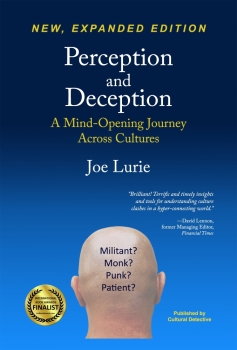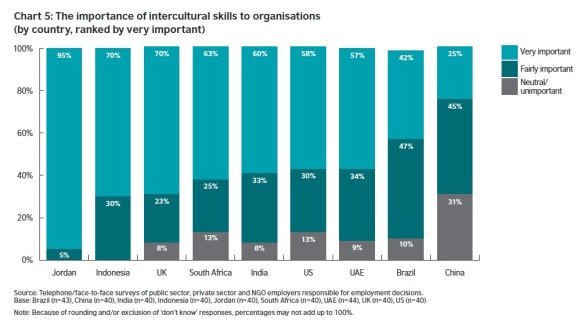
We are thrilled to announce that this award-winning volume is newly updated with application questions for each chapter and fully integrates with your Cultural Detective Online subscription! Purchase it now for your classroom or for holiday gifting.
—
Perception and Deception: A Mind-Opening Journey Across Cultures, 2nd edition, by Joe Lurie, Cross-Cultural Communications Trainer, Speaker and Emeritus Executive Director of UC Berkeley’s International House
What do your experiences tell you when you’re in line behind a bald man: Is he a militant? A monk? A punk? A neo-Nazi?… Or perhaps a cancer patient?
With YouTube, tweets and fake news instantly crossing cultures without context in this time of globalization, it’s essential to understand the actual meanings and intentions behind words, images and actions that seem abnormal or provocative. In line, online and off-line, we’re meeting many more “strangers.” There’s new wisdom in the Lebanese proverb: “Every stranger is a blind man.” And so, we face an urgency to teach students and professionals far more about other cultures and give them the intercultural skills to navigate globalization’s turbulent waters. That’s why, in collaboration with Cultural Detective, I’ve greatly expanded the first award-winning edition of Perception And Deception, A Mind-Opening Journey Across Cultures.
Think globalization is bringing us closer together? Think again. With refugees crossing cultures without preparation on either side, the dangers of intercultural miscommunication are intensifying. Why do many refugees traumatized by violence find Western “talk therapy” alienating? As a Syrian refugee confided, “I can’t share my painful, humiliating stories with a stranger.” A Sudanese refugee was diagnosed “psychotic” because she seemed to be talking to herself; her Boston psychiatrist was unaware that in her world, conversing with ancestors is normal. Some French see a Muslim woman in a burkina—a full body suit—as oppressed or as a potential terrorist. Yet the woman considers her burkini liberating, because she can swim modestly. Recently, a UC Berkeley student with a Spanish last name was snidely asked when she’d return to Mexico. Her angered response, “I’m from Kansas and I don’t speak Spanish.”
To enable use of the well-received stories in the first edition as springboards for developing intercultural competence, I’ve added a broad array of interactive questions and activities at the end of each chapter in this expanded new edition, as well as a brand new chapter, “Globalization and its Disconnects—Convergence Without Context.” It focuses in large part on the spiraling misunderstandings across cultures, especially in the worlds of refugees, religion, and responses to technology.
To better cope with the disrupting forces of globalization, each chapters’ questions and activities are designed to develop and heighten cultural self-awareness and sensitivity to others, among students, individuals and groups of all backgrounds and professions. Some of the included interactive, personalized activities are available for those who take advantage of Cultural Detective‘s superb, research-based, internationally tested online platform providing access to nearly 70 packages of rich intercultural material: Cultural Detective Online; other questions are useful on their own, without a subscription.
Below is a two-minute video recorded at the Commonwealth Club of California, introducing the first edition:
May the new edition’s stories and interactive activities addressing the disrupting forces of globalization and migration offer positive paths for engaging with difference without fear and by seeing with new eyes!
For further information and reviews about the book, or to order it from Amazon, visit PerceptionAndDeception.com; and to learn more about Cultural Detective’s anytime, anywhere intercultural competence development toolbox and virtual coach visit: www.CulturalDetective.com/cdonline.











